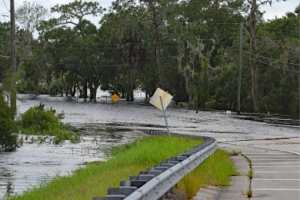Introduction
Last week, we published a blog post talking about neglected tropical diseases, and we thought it would be appropriate to follow up with a closer look at one of these diseases that is now present in Florida. Dengue fever is a neglected tropical disease that affects millions of people worldwide. It is transmitted by the Aedes mosquito, a pesky insect that loves to make itself at home in our backyards and gardens during the summer months. Unfortunately, this summer love story between mosquitoes and dengue fever is one that nobody wants to be a part of. This week, we published a new batch of zoonotic updates on our webpage, and it is alarming to see that there have already been two cases of locally acquired dengue fever reported in Florida in 2023. To spread awareness about this dangerous disease, we even published some memes about dengue fever and the weekly zoonotic updates on our Instagram page. In this blog post, we will explore the relationship between mosquitoes and dengue fever, discuss the symptoms of the disease, highlight the importance of public health measures, and a One Health approach in combatting its spread. Read on to learn more about this important topic.The Relationship Between Mosquitoes and Dengue Fever

Symptoms of Dengue Fever
The symptoms of dengue fever can range from mild to severe, and in some cases, the disease can even be life-threatening. In its mild form, dengue fever can cause flu-like symptoms such as fever, headache, joint and muscle pain, and a rash. These symptoms typically last for 2-7 days and can be treated with rest, fluids, and pain relievers. However, in its more severe form, dengue fever can progress to a potentially deadly complication called severe dengue or dengue hemorrhagic fever. This can cause symptoms such as severe abdominal pain, persistent vomiting, difficulty breathing, and bleeding mucosae likely due to coagulating issues caused by the immune complex-mediated platelet destruction, also called thrombocytopenia. Severe dengue can be fatal if left untreated, so it is important to seek medical attention immediately if you experience any of these symptoms after being bitten by a mosquito. Usually, these stronger symptoms appear 3-7 days after the initial symptom onset. Preventing mosquito bites is the best way to prevent dengue fever, especially if you live in or are traveling to an area with a high risk of transmission. This includes wearing long sleeves and pants, using mosquito repellent, and avoiding outdoor activities during peak mosquito hours, which are typically during the early morning and late afternoon. There is currently no specific antiviral treatment for dengue fever, but supportive care can help manage symptoms and prevent complications. Treatment typically involves rest, hydration, pain relief, and monitoring for signs of severe dengue, such as plasma leakage or severe bleeding.Climate Change and Dengue Fever
Climate change is having a significant impact on the spread of dengue fever. As temperatures rise, mosquito populations are increasing and expanding their range into areas that were previously too cold for them to survive. This means that dengue fever is becoming more common in areas where it was previously rare or nonexistent.
One Health and Dengue Fever
The concept of One Health recognizes the interconnectedness of human, animal, and environmental health. It emphasizes the need for collaboration and communication between different sectors and disciplines to achieve optimal health outcomes for all. One Health is particularly relevant to dengue fever, as the disease is transmitted by mosquitoes, influenced by various environmental factors such as climate change and habitat destruction. By taking a One Health approach to dengue fever, we can work to address these underlying factors and reduce the risk of disease transmission. One example of a One Health approach to dengue fever is the use of Wolbachia-infected mosquitoes. Wolbachia is a naturally occurring bacterium that can be introduced into mosquito populations to reduce their ability to transmit the dengue virus either by reducing the lifespan of the already infected mosquitoes or interfering with the replication of the disease-causing pathogens they carry (hence, decreasing their ability to transmit pathogens). When Wolbachia is introduced in a mosquito, the growth of dengue virus decreases. Wolbachia also reduces the lifespan of infected mosquitos. This approach has shown promise in reducing the incidence of dengue fever in several countries, including Australia and Indonesia.
Conclusion
Dengue fever is a serious public health issue, particularly in areas with high mosquito populations and/or inadequate healthcare resources. However, with the right interventions, it is possible to reduce the incidence of dengue fever and improve health outcomes for those affected by the disease. In this blog post, we have explored the causes, symptoms, and treatment of dengue fever, as well as the role of climate change and One Health in addressing this global health challenge. We hope that this information has been informative and useful for those interested in public health, medicine, sustainable development, and ecology. As a science blog, we are committed to providing accurate, up-to-date information on important topics such as dengue fever and other zoonotic diseases. We invite you to keep reading our blog and to check out our webpage and social media for more information on this and other One Health-related topics. Remember, everyone can play a role in preventing the spread of dengue fever and other mosquito-borne illnesses. By taking steps to reduce mosquito breeding sites, protecting ourselves from mosquito bites, and supporting efforts to address environmental and health challenges, we can work together to create a healthier, more sustainable world.By: Alejandro Sanchez MDP | Communications and Engagement Specialist
by One Health Center of Excellence
Note: All images and contents are the property of UF/IFAS.
Source: UF/IFAS Pest Alert



